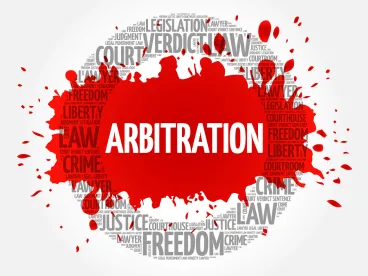With COVID-19 causing most states to require their citizens to stay at home, employers face a challenge: what to do about their backlog of arbitration cases?
For some cases, it may not matter when they are heard and decided. However, for others, such as those involving the potential for a backpay award, a sooner-than-later case resolution may be in the employer’s best interest. Further, waiting until after the stay-at-home orders are lifted may result in multiple arbitrations drawing employers away from running their businesses.
Enter virtual arbitrations. Offered by the American Arbitration Association (AAA) and the Federal Mediation and Conciliation Service (FMCS) in one form or another, they present the real potential for moving cases forward now. Of course, “it takes two to tango,” so the union generally has to agree with handling the arbitration virtually. In addition, the arbitrator must be comfortable with presiding over a virtual arbitration, which may require facility with programs such as Zoom or, possibly, WebEx. Fortunately, there are companies that are ready, willing, and able to provide their expertise.
Video hearings significantly decrease, or eliminate, travel costs, and provide greater flexibility in the timing and location of hearings. At the same time, conducting arbitrations by video conference may hamper the representatives’ and arbitrator’s ability to observe body language in connection with making credibility determinations, and can make reliance on multiple documents or exhibits cumbersome. Further, by limiting a participant’s view of the proceedings to what is seen on camera, video hearings also challenge policing of inappropriate off-camera conduct or witness coaching.
Regarding it takes two to tango, on April 1, 2020, the National Association of Arbitrators (NAA) issued Opinion No. 26 responding to whether an arbitrator may order that a matter proceed by video hearing over another party’s objection, without violating the Code of Professional Responsibility for Arbitrators of Labor-Management Disputes of the National Academy of Arbitrators.
Referencing the “fundamental importance” of parties’ “mutual consent” in agreeing to arbitrate, the NAA recognized that its position in Opinion No. 26 “concerns a possible exception” to that principle.
The NAA found that there could be circumstances where the need to “provide a fair and adequate hearing” and to “provide effective services to the parties” allows an arbitrator, “in exceptional circumstances,” to “order that a matter proceed by way of video hearing in whole or in part without mutual consent and over the objection of a party.”
The NAA also opined that where, “for example, a global pandemic makes it virtually impossible for an in-person hearing to be safely conducted, that factor may weigh in favor of the video hearing option, particularly if the hearing has been postponed previously, a party in opposition is non-responsive or declines to provide a reasonable explanation, and/or the case involves continuing liability or time sensitive matters.”
In making the decision whether to order a matter to proceed by video hearing, the NAA advised arbitrators to consider whether “the circumstances are so compelling as to override the usual presumption in favor of consensual scheduling practices.”
The NAA also cautioned that the arbitrator should be confident that they, as well as the parties, are familiar with the video hearing platform being used.
Virtual hearings are likely here to stay and there are good reasons for employers to investigate using them. While the NAA mentioned the current “context of the world-wide COVID-19 pandemic of 2019-20,” its opinion was not limited to that context. Instead, the NAA opinion “may have broader application in other circumstances.” The FMCS, which conducts labor-management arbitration hearings, reportedly lists more than 150 “video-capable” arbitrators, and now provides the parties an option to request a panel consisting only of those arbitrators.





 />i
/>i

